Creating a Systematic Art Thematic Unit Plan on Perspective Drawing With 2 Vanishing Points
Getting Started
This part of the thematic art unit plan for teaching perspective drawing includes the concept of two vanishing points. It is for middle year-level
students. Having practiced examples and projects with one vanishing point, they will enjoy creating a streetscape using two vanishing points.
Materials:
- 12 x 18 cartridge drawing paper
- 4B pencil or sketching pencil
- Yardstick (meter stick) or ruler (with cm)
Lesson Plan
Introduce this concept by showing pictures from the Internet of scenery involving a horizon, crossroads, and buildings with two sides. Point out where the sight lines converge on the two sides of the pictures.
Then have students begin a drawing on 12 x 18 inch drawing paper folded into quarters. Mark two vanishing points on the horizon at the left and right sides of the paper edges with a pencil. Draw lines from the top center and bottom center edge of the paper to the vanishing points (on the left and right edges) forming guidelines for this drawing.
Creating the Buildings
1. About inch down the center of the paper, along the fold, draw a vertical line to about 1 or 2 inches below the horizon. This will be the edge of a building.
2. From the top of this line to the vanishing points, draw diagonal guidelines.
3. Meaure another vertical line to the right of the center line about 2 inches away. Draw this vertical line between the guidelines. Draw a similar line on the left side. It does not have to be the same distance away from the center line.
4. To draw other buildings along this street, draw vertical lines two or more inches away from the sides of the first building. They can be taller or shorter than the top guidelines for the first building. If you want spaces between buildings rather than having them touch, draw lines 1 cm away from the first building, then lines to represent the width of the building farther away.
5. Draw buildings to the left and right of the center building. Always have the top of the buildings follow a line to the vanishing point.
6. Draw windows on the buildings by drawing parallel vertical lines a few cm apart. The more windows drawn, the taller the building appears. Always have the top and bottom edges of the windows follow a line to the vanishing point. They will not be parallel to each other.
Perspective Drawing Steps
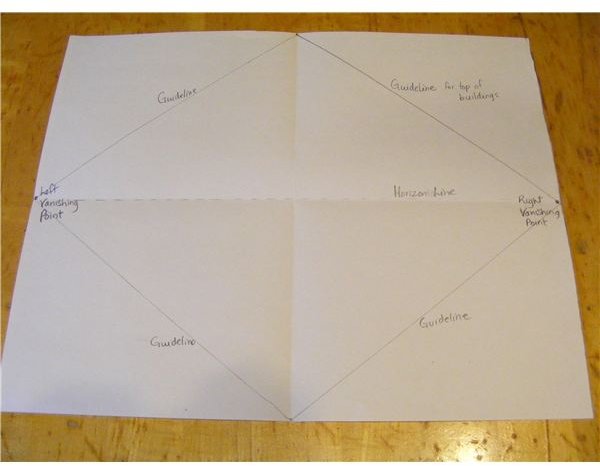
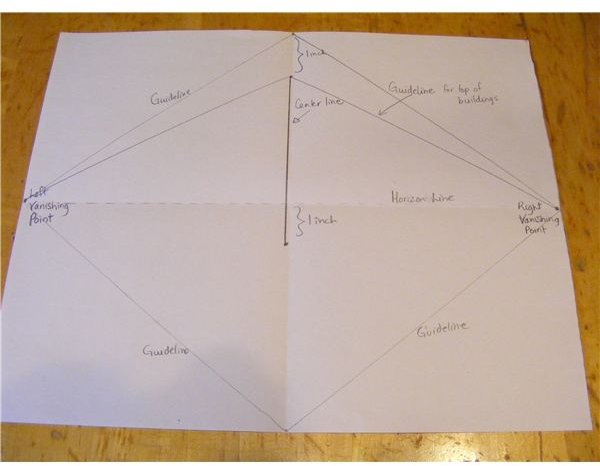
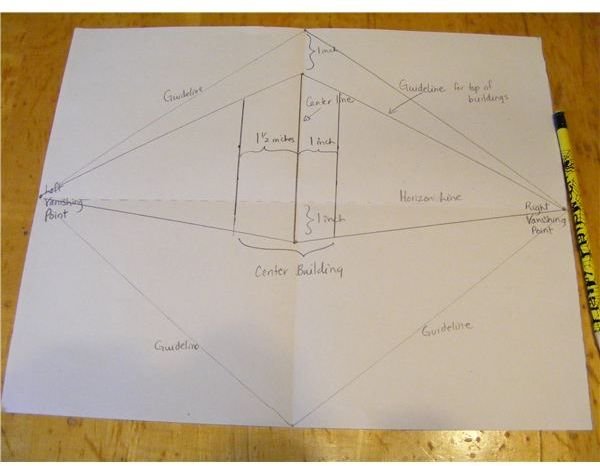
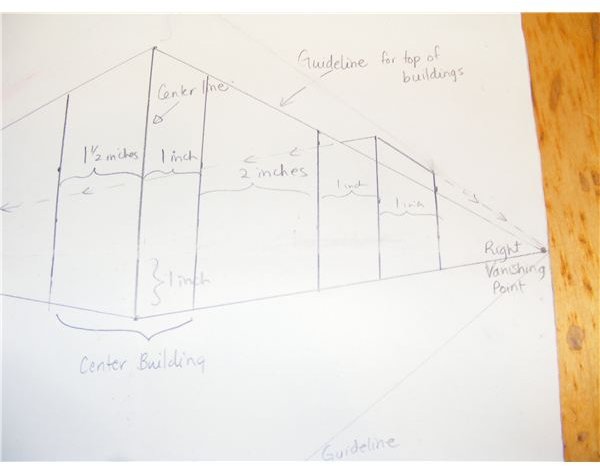
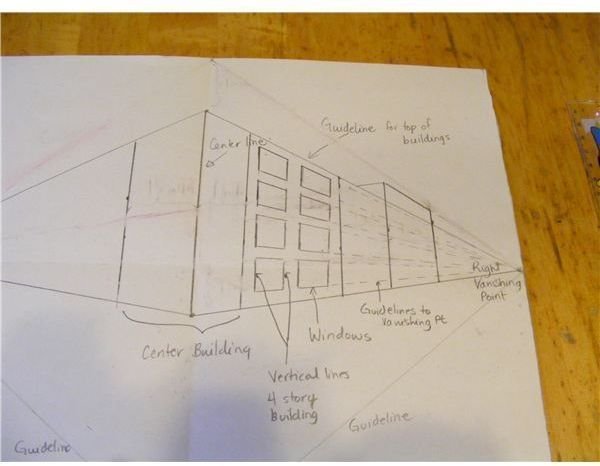
Add the Sidewalks
Creating the Sidewalks
Next, draw in the sidewalks to this streetscape. Start by drawing two guidelines about 1 inch down from the bottom of the center building to the left and right vanishing points. On the left side of the page, draw a line from the bottom of a building to the bottom of the sidewalk that leads to the vanishing point on the right side of the page.
Draw more lines from the bottom edges of the buildings to the edge of the sidewalk making sure they are pointing to the right vanishing point. Use a meter stick if a ruler is not long enough.
Draw a curb edge about 1 cm below sidewalk edge. Draw 2 lines to the right and left vanishing point to create the curb edge. Draw small vertical lines from sidewalk lines down to the curb edge.
Do the same thing on the right side of the page to create the sidewalk lines.
Sidewalks on Perspective Drawing of Street Scape
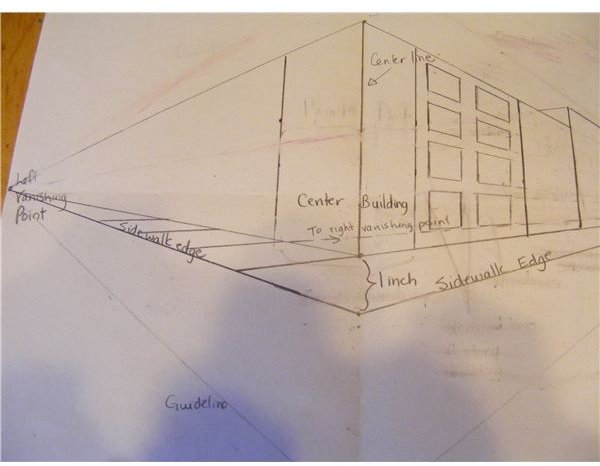
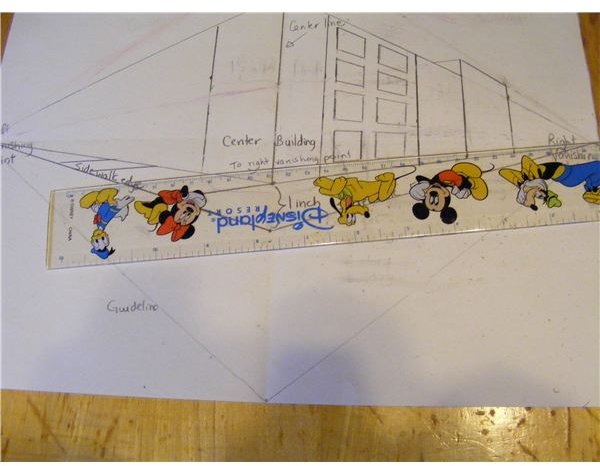



Finishing Touches on Street Scape
Add details to the buildings such as window, doors and signs with block letters on them. Try to make all lines straight rather than curved.
Students will want to add familiar logos and building ads but they should keep in mind that this is a line drawing and too much inaccurate detail will lead the eye away from the vanishing points. Trees, sign posts, and road markings can add to the streetscape if students know how to add correct lines to their drawing.
Display the student’s pictures of the streets in a line with the horizon lined up so that they appear as streets that disappear off into the distance.
Displaying Street Scapes
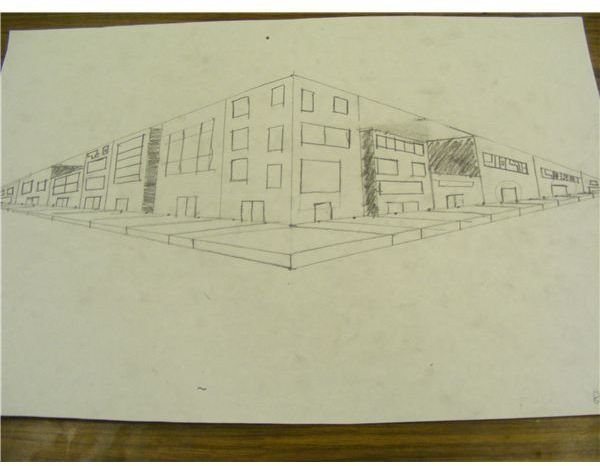
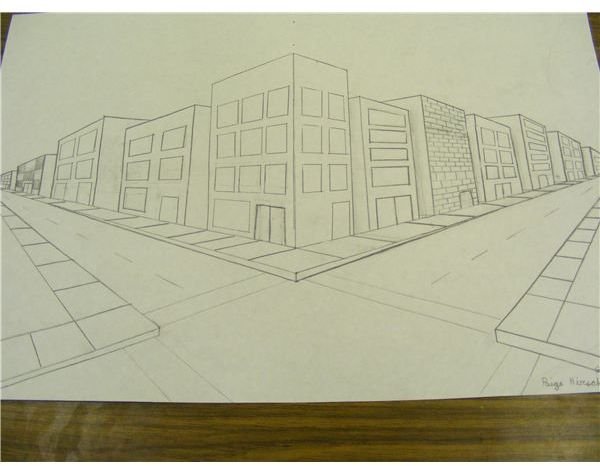
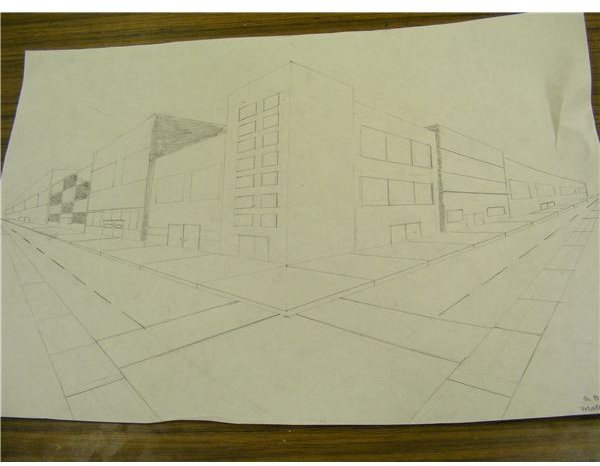
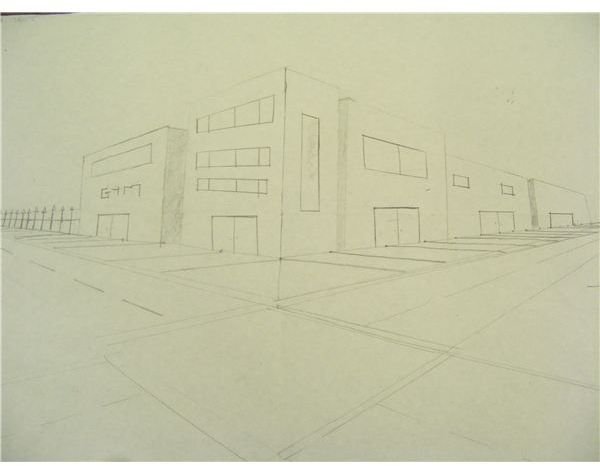
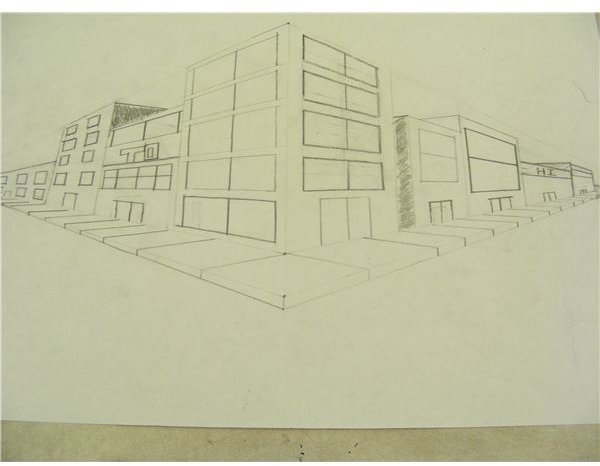
Two Point Perspective Lessons
This streetscape is a step-by-step lesson on two-point perspective. Students may then want to further their skills with more practice.Other lessons might include drawing a particular historic building from their city or town. They may want to draw the school, a part of the school such as a hallway, or the gym. They could draw an outdoor scene such as a mall or the interior of a mall.
They could also create their own scene from their imagination. The scene does not always have to include buildings. It could involve rows of trees, flowers, and plants. It could be a graveyard scene, a warehouse, a library shelf, row housing, two trains on tracks or lego blocks. Have each student come up with a unique idea.
For further ideas and resources on perspective drawing this Lesson Plan on Perspective Drawing from IncredibleArt.org showcases student art, teacher lessons and other ideas which teachers found to be useful.
Once students understand drawing perspective with two vanishing points, there are many possbilities for scenes to create.
This post is part of the series: Thematic Art Lesson Unit Plan on Perspective Drawing
This series outlines how to create perspective drawings with middle years students. The thematic art unit plan has practice lessons for perspective drawings with 1 vanishing point, and 2 vanishing points. Students will enjoy designing a bedroom and a drawing of a streetscape.
